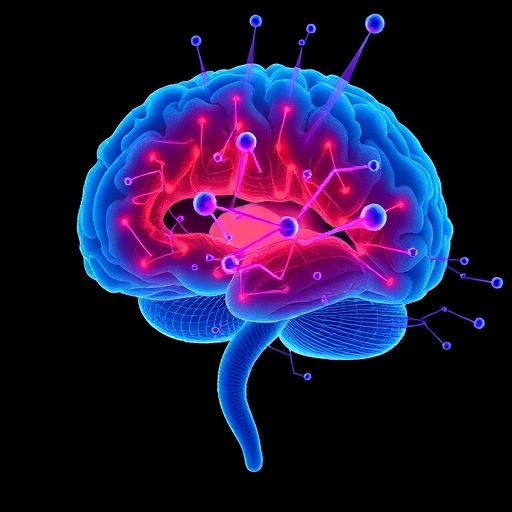Credit: © Roger Hangarter
New research shows how two drastically different organisms–a green alga and the spotted salamander–get along as cellular roommates. Scientists at the American Museum of Natural History and Gettysburg College found that this symbiosis, the only known example that includes a vertebrate species, puts stress on algal cells, changing the way they make energy, but does not seem to negatively impact salamander cells. The work is published today in the journal eLife.
"Science shows us the many ways that life is interconnected, especially on the microscopic level, where we see how many organisms depend on close contact with or internalization of other species for food, defense, or reproduction," said lead author John Burns, a postdoctoral researcher in the Museum's Division of Invertebrate Zoology. "But the relationship between this particular alga and salamander is very unusual."
Scientists have known for more than a century that a green alga (Oophila amblystomatis) grows in the egg cases of the spotted salamander (Ambystoma maculatum)–the strange pairing is visible to the naked eye in the green hue of salamanders' eggs. The symbiosis was originally thought to occur only between the salamander embryo and the algae living outside it. The embryos produce nitrogen-rich waste that is useful to algae, and the algae increases the oxygen content of the fluid around the respiring embryos. But recent research has revealed that the algae are actually located inside cells all over the spotted salamander's body. This cell-within-a-cell relationship can also be found in corals and in the guts of cicadas, but the green alga-spotted salamander interaction is the only known example of a symbiont entering the cells of a vertebrate species.
"This is really such a strange arrangement to think about, that the salamanders allow the algae to live in their egg cases. It would be like having a bunch of green algae in a womb," said study co-author Ryan Kerney, an assistant professor at Gettysburg College. "What we set out to look at now is the kind of molecular change that happens when the salamander cells and green algae cells are together."
In the new eLife study, the researchers compared RNA from the cells of five different groups: salamander cells with algae, salamander cells without algae, the algal cells living in salamander cells, the algae living in the egg capsules, and algae cultured in the laboratory.
They found that algae inside salamander cells are stressed and change the way they make energy. Instead of using light energy to produce food to support the salamander host, as happens in coral-algae interactions, the algae in salamander cells struggle to adapt to their new environment. Whether the algae benefits from this cell-within-a-cell interaction remains unclear. In stark contrast, affected salamander cells appear to recognize the alga as foreign but show no signs of stress during the interaction. The researchers found that the salamanders overexpress several genes that might suppress an immune response, suggesting that the host cell experience is neutral or beneficial.
"We are learning that these two fundamentally different cells are changing each other dramatically, and this might be relevant for other symbiotic systems, including human and parasitic microbe relationships," said study co-author Eunsoo Kim, an assistant curator in the Museum's Division of Invertebrate Zoology.
###
Other authors on this study include Huanjia Zhang and Elizabeth Hill, undergraduate students at Gettysburg College.
This work was supported, in part, by the Howard Hughes Medical Institute and the National Science Foundation, grant #s 1428065 and #1453639.
eLife paper: http://dx.doi.org/10.7554/eLife.22054
For more information about this project, see this recent episode of the Museum's Shelf Life series: http://www.amnh.org/shelf-life/episode-11-green-grow-the-salamanders
American Museum of Natural History (amnh.org)
The American Museum of Natural History, founded in 1869, is one of the world's preeminent scientific, educational, and cultural institutions. The Museum encompasses 45 permanent exhibition halls, including the Rose Center for Earth and Space and the Hayden Planetarium, as well as galleries for temporary exhibitions. It is home to the Theodore Roosevelt Memorial, New York State's official memorial to its 33rd governor and the nation's 26th president, and a tribute to Roosevelt's enduring legacy of conservation. The Museum's five active research divisions and three cross-disciplinary centers support approximately 200 scientists, whose work draws on a world-class permanent collection of more than 34 million specimens and artifacts, as well as specialized collections for frozen tissue and genomic and astrophysical data, and one of the largest natural history libraries in the world. Through its Richard Gilder Graduate School, it is the only American museum authorized to grant the Ph.D. degree and the Master of Arts in Teaching degree. Annual attendance has grown to approximately 5 million, and the Museum's exhibitions and Space Shows can be seen in venues on five continents. The Museum's website and collection of apps for mobile devices extend its collections, exhibitions, and educational programs to millions more beyond its walls. Visit amnh.org for more information.
Media Contact
Kendra Snyder
[email protected]
212-496-3419
@amnh
http://www.amnh.org
############
Story Source: Materials provided by Scienmag




